7 Essential Safety Tips for Solo Female Hikers
Solo female hikers, trail runners, and outdoor lovers, if you are called to the wild all by your lonesome, you shouldn’t let anyone stand in your way. It is safe for a woman to hike alone – just take precautions. Head into nature and enjoy the vast beauty that awaits as part of the world’s greatest treks.
Going solo means rising to the challenge and building up your personal responsibility. Don’t fall for common mistakes, like overestimating your true fitness, underestimating nature’s unpredictability, not having the proper gear, underpacking or overpacking, or not bringing or following signs and maps.
When you’re alone, it’s just you, so you have to prepare yourself properly for whatever you’re walking into. But hiking alone doesn’t have to feel dangerous. Follow these tips to prioritize safety and protect yourself while enjoying your amazing adventures in the wild.
1. Be Over-Prepared
Choose a trail that is easy to find and popular. Plan ahead and research how long it will take, whether it’s a day hike or a thru-hike. Before heading out, thoroughly research your chosen trail or location and get to know the details of the trail. Start your hike or run early enough in the day to ensure you have plenty of daylight to complete your journey. Don’t push the limits of daylight, especially if you’re unfamiliar with the trail.
Familiarize yourself with the terrain, trail conditions, weather forecasts, and potential hazards. Always let someone know your itinerary and expected return time. Check the weather forecast before starting your hike or run, and remember that sudden weather changes can be dangerous, so be prepared with appropriate clothing and shelter.
Learn about the wildlife in the area you’re visiting too. Understand how to react if you encounter animals like bears or cougars. Carry bear spray if you’re in bear country, which can help protect you from suspect characters as well.
Learn basic navigation skills, such as using a compass and reading a map. GPS devices can be helpful but should not be relied upon exclusively. Download offline maps on your smartphone and bring a power bank.
1. Solo Female Hike Preparation Checklist:
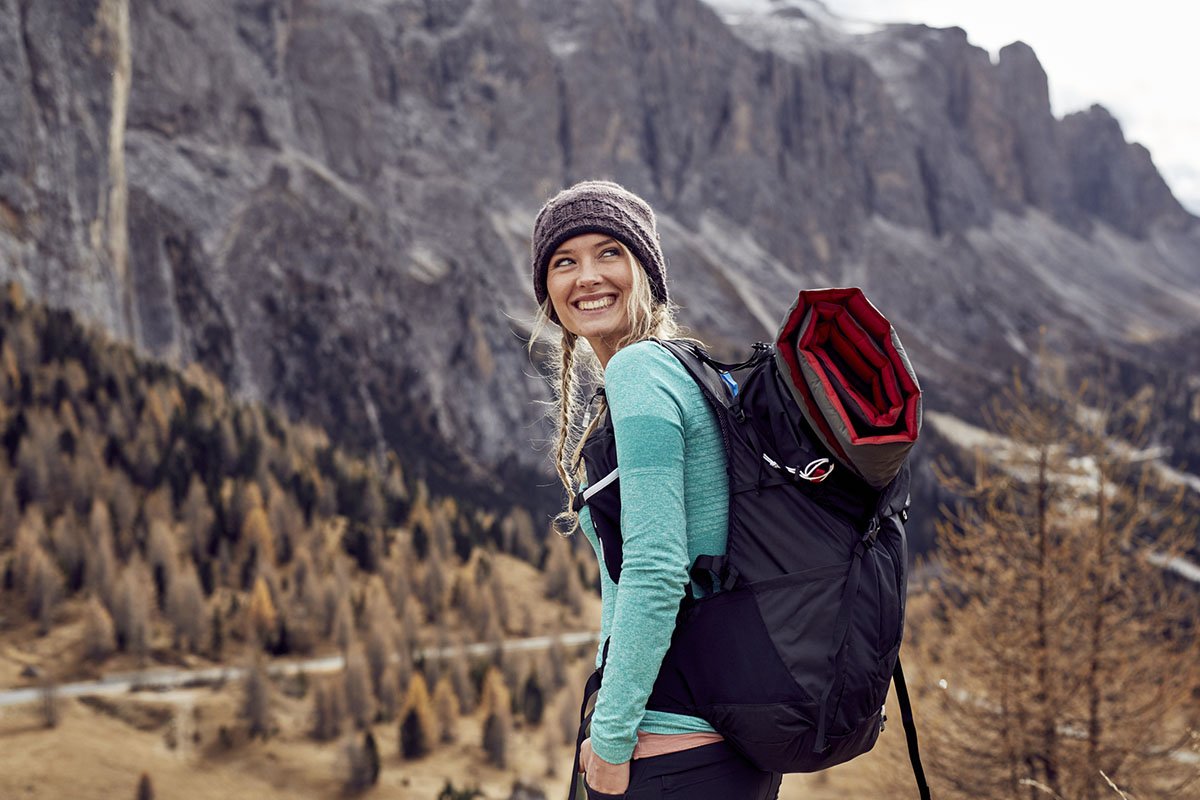
- Weather
- Wildlife
- Time
- Trail
- Training
- People
- Protection
- Navigation (map, GPS downloaded offline)
- Nutrition
2. Choose a Popular Trail
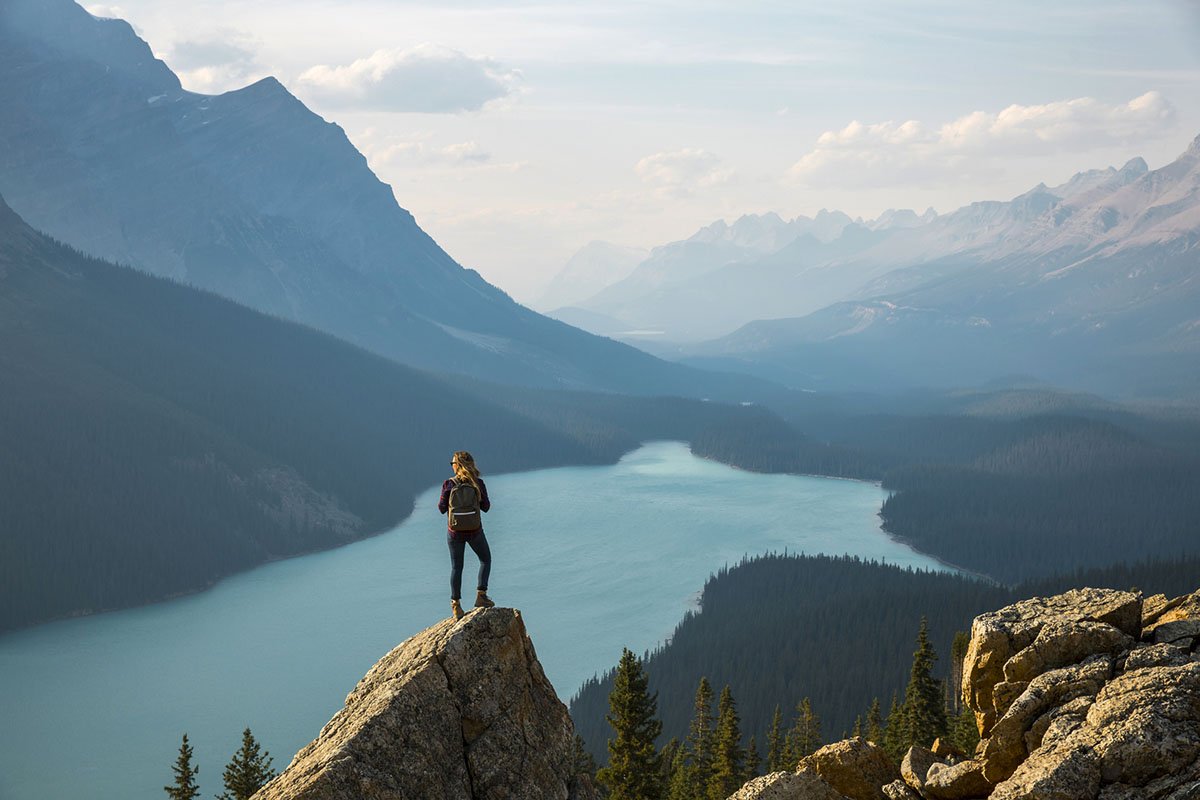
It might sound obvious, but if it’s your first time out hiking alone, don’t attempt to avoid crowds, go for a popular trail. You may be alone, but let’s not go for isolated, at least at the start. Ease into hiking by yourself before you go for the more obscure trail. Well-traveled and well-maintained trails are great because they are not only easier to find but are also safer, and they’re likely very beautiful as well.
Keep to the marked trail. Always be on a lookout for the right direction if there are confusing forks in the road. If someone comes by you can ask for directions, but always trust your instincts, and bring a map. Use a paper or electronic map for navigation and check your progress at frequent intervals to avoid navigational mistakes. Going off trail can lead to getting lost. Don’t be afraid to turn around.
3. Have the Right Gear
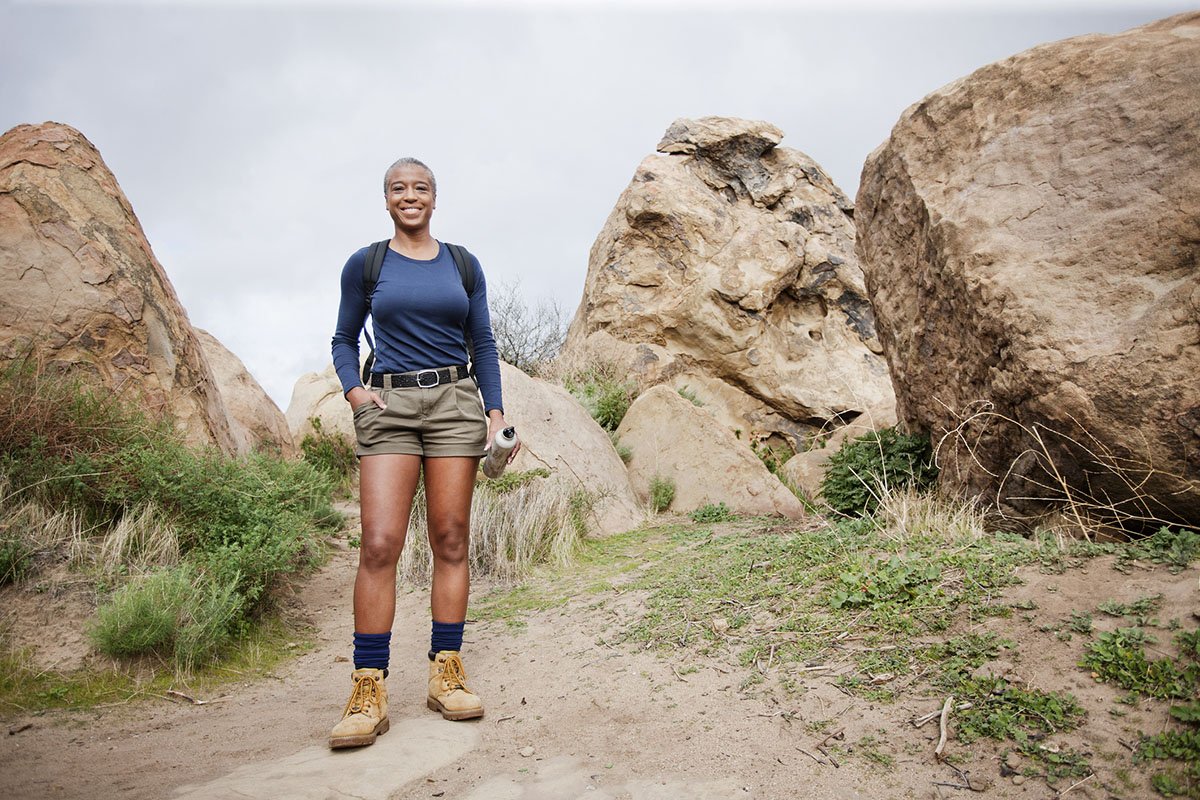
Always bring appropriate gear and equipment, including a map and compass (and know how to use them), a first aid kit, a headlamp or flashlight, extra clothing, and food.
Some solo female hikers choose to carry personal safety tools for creepers or animals, such as a whistle, pepper spray, and/or a personal alarm. Three shrill blasts on your whistle is the universal call for help.
Essential Survival Gear for Solo Female Hikers
- Navigation: a paper map, GPS, and compass
- Sun protection
- Warm clothing, emergency blanket
- Headlamp or flashlight, charged or with batteries
- First aid kit
- Fire-making kit: lighter or waterproof matches (bonus: fire starter)
- Knife
- Food
- Water
- Emergency shelter
Bear this solo hiking list in mind, but also make sure not to pack too much.
4. Let People Know
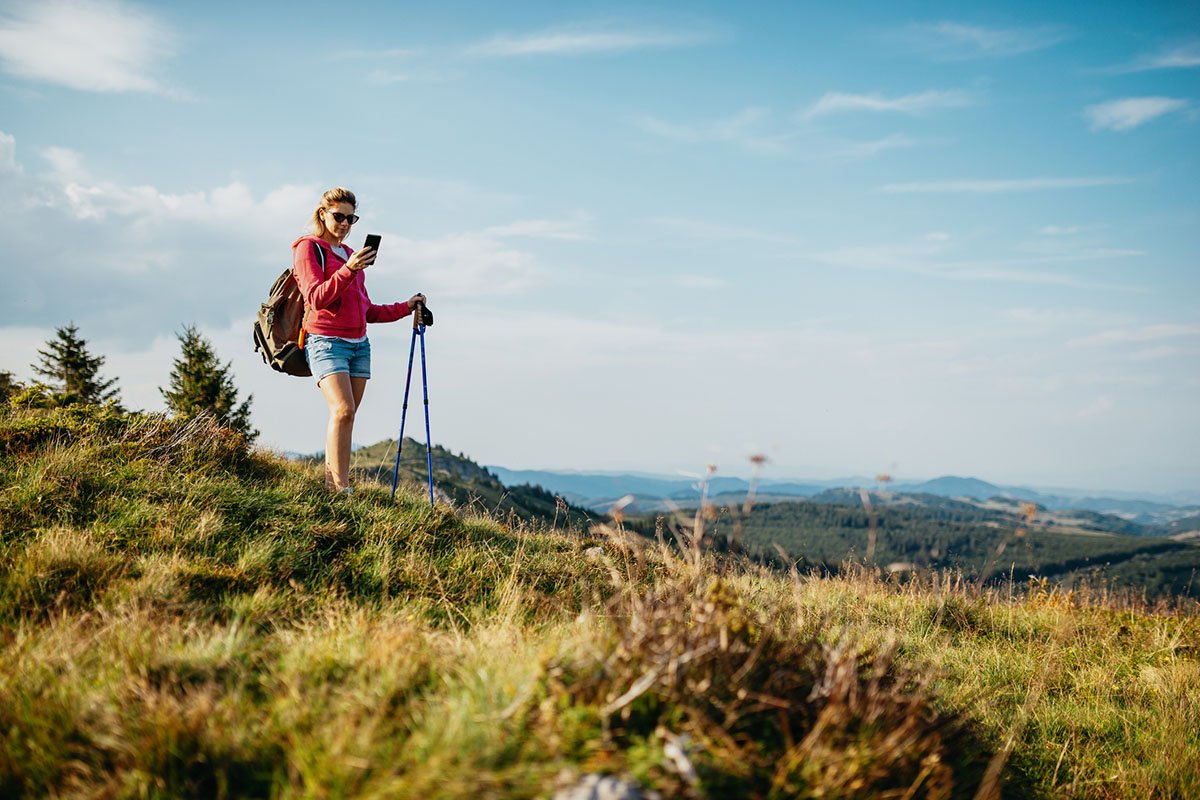
It might be appealing to just run off without a note, but informing a trusted friend or family member about your plans can give solo female hikers peace of mind. Let them know your start time and estimated end time and trail name. Consider using a hiking safety app that allows others to track your progress. You can share your location if you have service.
If you’re nervous to share your location with friends and family, you can always speak with the park rangers and let them know your hiking plans. Hit two birds with one stone and ask the ranger if there will be cell service along your route. Knowing whether you have the ability to use your phone should you need to make an emergency call is an important preparation to make.
You can always invest in a satellite communication device or a personal locator beacon for remote areas where cell phone reception is unreliable. Leave your itinerary with someone you trust. You can also put regular posts on social media if you have service or put up a post summarizing your plans.
5. Know Your Body

Avoid one of the most common mistakes new solo female hikers make by knowing your body’s limits. There’s nothing wrong with wanting to push yourself, but prepare with proper water and food to sustain you for your whole journey, whether you’re hiking or running. Dehydration and exhaustion can lead to complications nobody wants.
Honor your mental and physical limitations, and take care of yourself. It’s not weak to be cautious. There’s no need to push yourself too hard on a challenging hike all by your lonesome. Take your time, be thoughtful, and pay attention to your body as you go.
6. Pay Attention
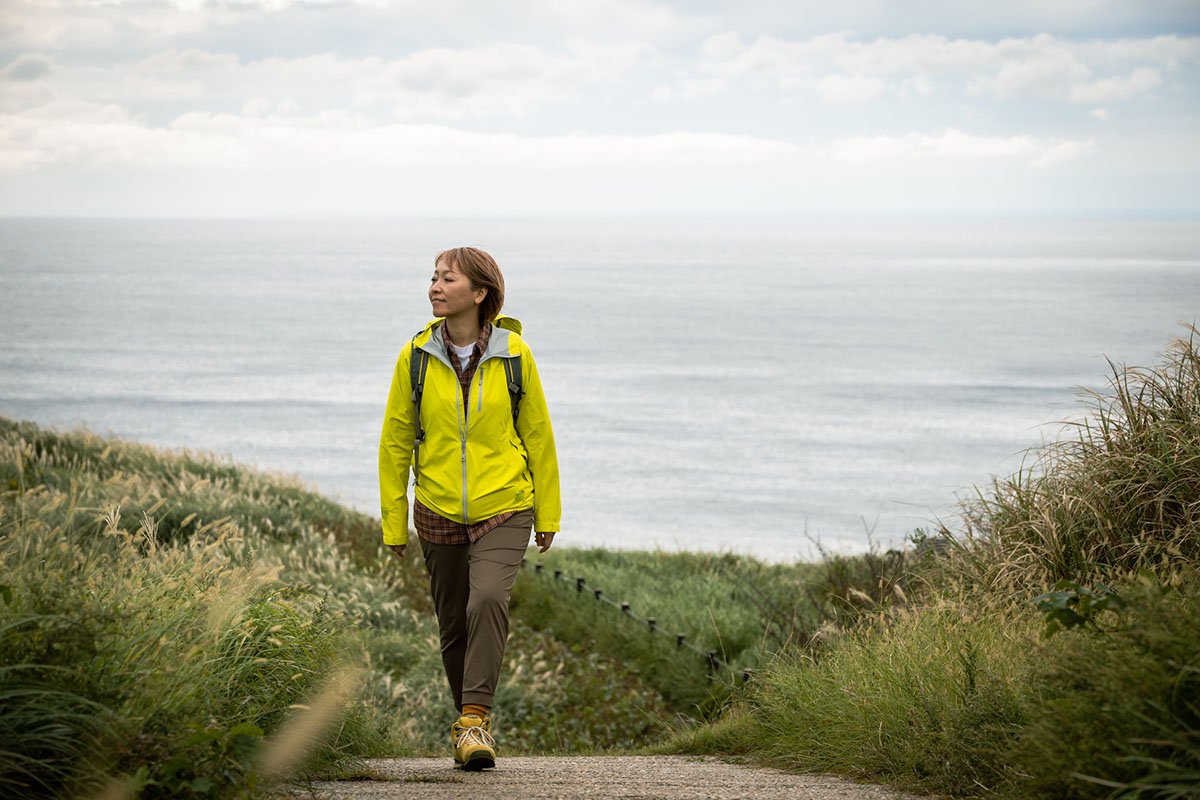
Simply staying focused on what you’re doing can go a long way. Keep your senses sharp while on the trail and watch for signs and indicators of where you are. Don’t wear headphones in case dangerous animals or people are nearby. Be ready for anything by staying aware of your surroundings.
7. Trust Yourself
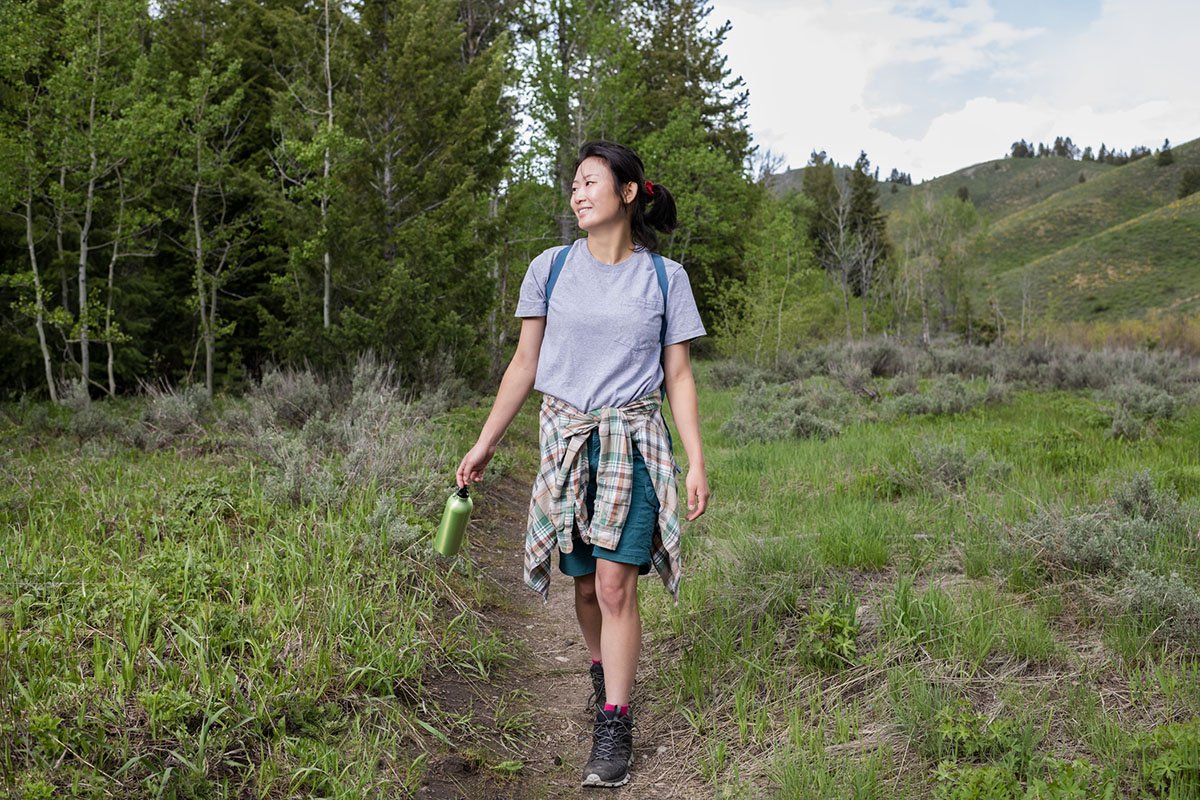
You may feel intimidated to hike alone, but it’s important to trust your internal compass and intuition. If someone seems strange, they are probably strange. Trust your instincts and listen to your gut. Don’t say yes to something you don’t want to do or take a path you are unsure about. Consider turning back or changing your plans if something doesn’t feel right.
If learning some practical self-defense gives you even more confidence, consider taking self-defense classes so you’re ready in case of an emergency while you’re alone on the trail.
It can be daunting to try solo hiking no matter who you are, but it all comes down to being ready for anything and preparing for what you can prepare for in advance. With proper preparation and constant vigilance, solo female hikers and trail runners can have perfectly safe adventures in the wild.
Source: https://outdoors.com/essential-safety-tips-for-solo-female-hikers/







